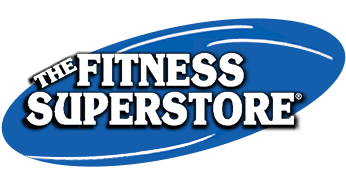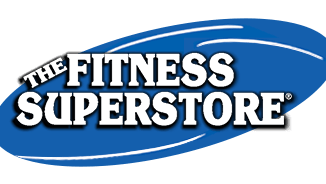Building a strong chest doesn’t require a gym membership—there are many effective ways to train at home with or without equipment. If you’ve been searching for information on how to work out your chest at home, this blog will provide the best methods to target your chest muscles using bodyweight exercises, dumbbells, and other strength-training equipment. Whether you’re a beginner or an experienced lifter, you can achieve impressive chest development right from your home in Albuquerque.
How To Train Chest at Home Without Equipment
If you don’t have weights, you can still build muscle and strength with bodyweight exercises. The key to training your chest at home without equipment is focusing on progressive overload—gradually increasing difficulty by adding reps, adjusting tempo, or modifying exercises.
- Push-Ups – The classic push-up is an excellent exercise to target your chest, shoulders, and triceps. Adjust hand placement to focus on different areas of the chest—wide-grip push-ups emphasize the outer chest, while diamond push-ups target the inner chest and triceps.
- Incline Push-Ups – Place your hands on an elevated surface like a sturdy chair or countertop to shift more emphasis to the lower chest.
- Decline Push-Ups – Elevate your feet on a bench or step to increase resistance and focus on the upper chest.
- Plyometric Push-Ups – Adding an explosive element, like clapping between reps, increases power and muscle activation.
- Chest Dips (Using Parallel Surfaces) – If you have sturdy parallel bars or two chairs, dips are great for activating the lower chest and triceps.
To make bodyweight training more challenging, consider using a weighted backpack, slowing down reps for more time under tension, or performing unilateral (one-arm) variations.
How To Train Chest With Dumbbells at Home
If you have dumbbells, you can take your home chest workouts to the next level by incorporating resistance exercises. Training your chest with dumbbells at home comes down to utilizing pressing and fly movements that mimic gym-style workouts.
- Dumbbell Bench Press – If you have a bench, performing a dumbbell press allows for a greater range of motion than a barbell press, helping to maximize muscle engagement. If a bench isn’t available, try pressing from the floor.
- Dumbbell Chest Fly– This movement stretches and activates the chest muscles, helping to develop width and definition.
- Incline Dumbbell Press (Using an Adjustable Bench or Stability Ball) – Targets the upper chest for a more complete chest development.
- Dumbbell Pullover – While primarily a lat-focused movement, pullovers also stretch and engage the chest.
- Neutral-Grip Dumbbell Press – Holding dumbbells in a neutral grip (palms facing each other) changes the angle of the press and places more emphasis on the inner chest.
Dumbbells allow for unilateral training, meaning each side of the chest works independently, reducing muscle imbalances. If you need a high-quality set of dumbbells, The Fitness Superstore in Albuquerque offers top-tier adjustable and fixed dumbbells for all fitness levels.
At-Home Chest Workout With Weights
For those with additional strength training equipment, an at-home chest workout with weights can be structured like a traditional gym workout. Using a combination of dumbbells, barbells, kettlebells, and resistance bands can maximize muscle activation and provide progressive overload.
Sample Chest Workout With Weights:
- Barbell Bench Press – A foundational chest exercise for building strength and size.
- Incline Bench Press (Dumbbells or Barbell) – Focuses on upper chest development.
- Dumbbell Flies – Improves chest width and flexibility.
- Weighted Push-Ups – Add a weighted vest or place a plate on your back to increase resistance.
- Kettlebell Floor Press – A variation of the dumbbell press that challenges stability.
- Resistance Band Chest Press – A great option for adding tension without traditional weights.
At The Fitness Superstore, we offer everything from adjustable dumbbells and barbells to benches and squat racks to help you create a complete home gym setup. Our expert fitness consultants can guide you in selecting the right equipment for your space and training goals.
Do You Need Equipment for Home Chest Workouts?
While home chest workouts can be effective using just body weight, adding equipment can take your training to the next level. Weights provide progressive overload, which is essential for building muscle mass over time.
- Adjustable Dumbbells – Compact and versatile, allowing you to perform various chest exercises with different resistance levels.
- Flat or Adjustable Bench – Essential for pressing and fly movements, offering better positioning than floor-based exercises.
- Barbells and Weight Plates – Ideal for those serious about strength training and muscle development.
- Resistance Bands – A space-saving alternative to free weights that still provides resistance training.
- Kettlebells – Useful for dynamic movements like floor presses and pullovers.
At The Fitness Superstore, we offer the largest selection of fitness equipment in the region. Whether you’re looking for new or high-quality used equipment, our team is here to help you find the best gear for your home workouts.
Why Choose The Fitness Superstore?
As a locally owned and family-operated business for over 30 years, The Fitness Superstore is committed to helping our community achieve their fitness goals. We offer:
✔ The largest fitness equipment inventory in Albuquerque
✔ Expert fitness consultants to help you choose the right equipment
✔ The best low-price guarantee in the industry
✔ In-house delivery and installation by trained professionals
✔ A 30-day in-home trial on select equipment (see store for details)
✔ Service and support from our experienced, in-house technicians
We also buy and sell high-quality used fitness equipment, making it easy to upgrade your home gym while staying within budget. If you have fitness equipment you’d like to sell or trade, contact us with photos at used@thefitnesssuperstore.com.
Start Your Home Chest Workouts Today
Whether you’re looking to train with bodyweight exercises or invest in a free weights weightlifting set in Albuquerque, The Fitness Superstore has everything you need to succeed. Now that you know how to work out your chest at home, it’s time to take action and build a stronger, more defined chest. Visit our store today to explore our selection and find the perfect equipment for your home chest workouts! Contact us for more information now.







